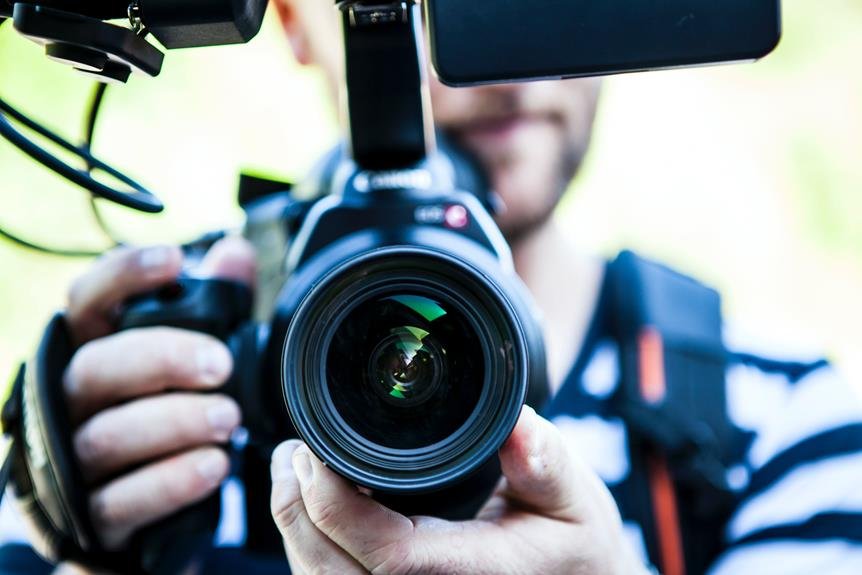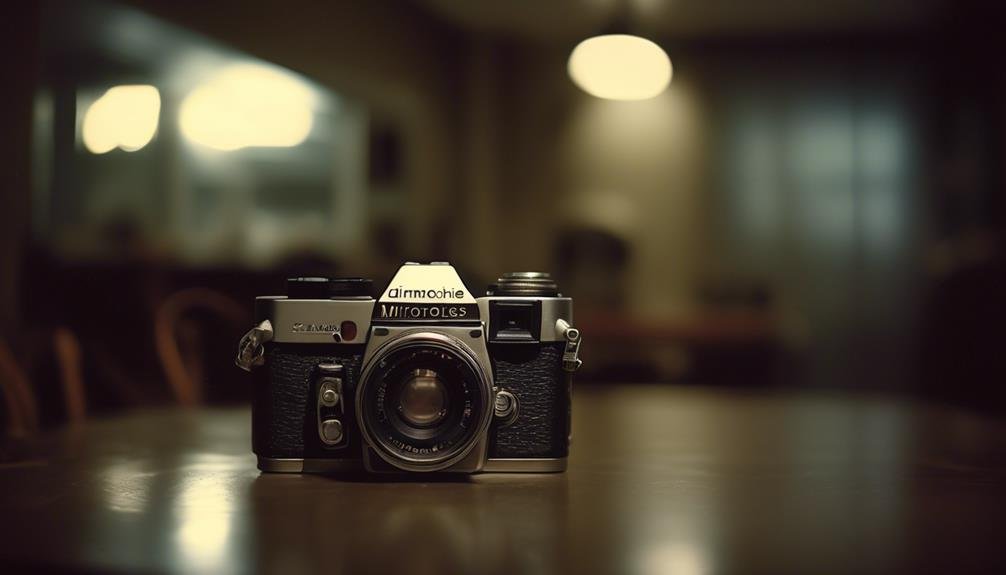
When it comes to capturing high-quality video, we all want one thing: seamless autofocus that keeps our subjects sharp and in focus. Mirrorless cameras have revolutionized the way we approach autofocus in video production. But what sets them apart from traditional DSLRs? Well, let's just say that the advancements in mirrorless autofocus technology have completely changed the game, offering features that were once unimaginable.
Rapid and Accurate Autofocus
Mirrorless cameras excel in achieving rapid and accurate autofocus, ensuring sharp and clear video footage. Their advanced autofocus systems employ cutting-edge technology to deliver fast response and reliable performance, meeting the demands of videographers and content creators. By utilizing contrast-detection and phase-detection methods, mirrorless cameras can swiftly and precisely lock onto subjects, maintaining focus even during dynamic and high-speed scenes. This capability is particularly valuable when capturing moving subjects or when shooting in challenging lighting conditions.
The integration of sophisticated algorithms and real-time tracking further enhances the autofocus capabilities of mirrorless cameras, allowing for seamless focus transitions and accurate subject detection. This ensures that the footage remains consistently sharp and in focus, providing a professional and polished look to videos. Additionally, the silent operation of mirrorless autofocus systems eliminates distracting noise during filming, contributing to a more immersive and professional viewing experience.
Real-time Tracking and Eye Detection
Real-time tracking and eye detection enhance the autofocus capabilities of mirrorless cameras, ensuring precise focus on moving subjects and accurate identification of subjects' eyes for compelling video footage. Continuous improvement in technology advancements has led to significant enhancements in real-time tracking and eye detection in mirrorless cameras, making them an attractive choice for videographers. These advancements allow for seamless focus transitions, even with subjects in motion, providing a professional touch to the video content.
To illustrate the advancement in real-time tracking and eye detection, consider the following features:
| Feature | Description |
|---|---|
| Real-time Tracking | Continuously adjusts focus to keep moving subjects sharp |
| Eye Detection | Identifies and focuses on subjects' eyes |
| Subject Recognition | Recognizes and tracks specific subjects |
These features showcase the continuous improvement in mirrorless camera technology, allowing videographers to capture stunning, professional-quality footage with ease. With real-time tracking and eye detection, mirrorless cameras offer unparalleled precision and efficiency in autofocus, empowering creators to produce visually captivating content.
Smooth and Silent Focus Transitions

Enhancing the autofocus capabilities of mirrorless cameras, smooth and silent focus transitions ensure seamless and professional-quality video footage. This feature is crucial for capturing cinematic sequences and maintaining viewer engagement. Here's why smooth and silent focus transitions are essential:
- Noise Reduction
- The near-silent operation of mirrorless cameras during focus transitions eliminates distracting motor noise from the audio track, ensuring a clear and professional sound quality in video recordings.
- This noise reduction capability is particularly advantageous in environments where minimal disruption is essential, such as during interviews or in quiet settings.
- Dual Pixel
- With advanced dual pixel autofocus technology, mirrorless cameras deliver exceptionally smooth and accurate focus transitions, resulting in a polished and professional look to video content.
- Dual pixel autofocus systems enable rapid and precise focusing, allowing for seamless transitions between subjects and maintaining sharpness throughout the footage.
The combination of noise reduction and dual pixel autofocus in mirrorless cameras not only enhances the overall video quality but also provides content creators with the necessary tools to achieve professional-grade results consistently.
Customizable Autofocus Settings
We can optimize our video production by utilizing the customizable autofocus settings available in mirrorless cameras. These settings allow us to tailor the autofocus performance to suit specific shooting scenarios, resulting in significant autofocus improvements. With customizable settings, we can adjust parameters such as focus sensitivity, speed, and tracking behavior to achieve the desired focus effect. For example, in fast-paced sports videography, we can enhance the autofocus speed to accurately track rapid movements, ensuring that the subject remains sharply in focus throughout the footage. On the other hand, for cinematic shots requiring smooth focus transitions, we can fine-tune the focus sensitivity to achieve seamless and natural-looking focus pulls.
Furthermore, the ability to customize autofocus settings empowers us to adapt to diverse shooting conditions, whether it's low-light environments, unpredictable subject movements, or varying depths of field. This level of control over autofocus functionality not only enhances the overall quality of our video content but also allows for greater creative expression. By leveraging the customizable autofocus settings in mirrorless cameras, we can elevate the precision and reliability of our autofocus, ultimately producing professional-grade video content.
Enhanced Low-light Autofocus

In low-light conditions, mirrorless cameras employ advanced autofocus technology to ensure precise and rapid focus acquisition. This enhanced low-light autofocus is achieved through improved performance and advanced technology, making it ideal for capturing high-quality video in challenging lighting situations. Here are a few key features that contribute to the impressive low-light autofocus capabilities of mirrorless cameras:
- Enhanced Sensitivity: Mirrorless cameras are equipped with advanced sensors that can detect and focus on subjects even in dimly lit environments. This enhanced sensitivity allows for reliable autofocus performance in low-light conditions, ensuring that your video footage remains sharp and clear.
- Advanced Contrast Detection: Mirrorless cameras utilize advanced contrast detection algorithms to accurately determine focus, even in situations where traditional phase detection may struggle. This advanced technology enables the camera to quickly and accurately adjust focus in low-light settings, resulting in smooth and consistent autofocus performance.
With these advanced features, mirrorless cameras excel in maintaining precise autofocus even in challenging low-light conditions, making them a preferred choice for videographers who require reliable performance in any environment.
Frequently Asked Questions
Can Mirrorless Cameras With Autofocus Be Used for Professional Videography?
Yes, mirrorless cameras with advanced autofocus technology are revolutionizing video production. They offer precise tracking and smooth focus transitions, making them ideal for professional videography. Their compact size also enhances mobility and versatility on set.
What Are the Differences in Autofocus Performance Between Mirrorless Cameras and Traditional Dslrs?
Autofocus performance on mirrorless cameras offers advantages over DSLRs, such as superior tracking and eye detection. Customizable settings impact videography capabilities, optimizing video quality. However, low light challenges should be considered for shooting.
Are There Any Limitations to the Real-Time Tracking and Eye Detection Capabilities of Mirrorless Cameras?
Yes, there are limitations to the real-time tracking and eye detection capabilities of mirrorless cameras. The tracking accuracy and performance consistency may vary, impacting the overall video quality. Understanding these limitations is crucial for optimal video production.
How Does Customizable Autofocus Settings Impact the Overall Video Quality?
Customization benefits profoundly impact video quality. Tailoring autofocus settings enhances accuracy, ensuring sharp, professional footage. Personalizing focus parameters empowers creators, elevating the visual impact of their content. It's a game-changer for innovative videography.
Are There Any Specific Challenges or Considerations When Using Mirrorless Cameras for Low-Light Video Shooting?
In low light, mirrorless cameras excel in autofocus accuracy, allowing for precise focus even in challenging conditions. This performance, combined with their compact size, makes them an ideal choice for capturing high-quality video in various lighting situations.
